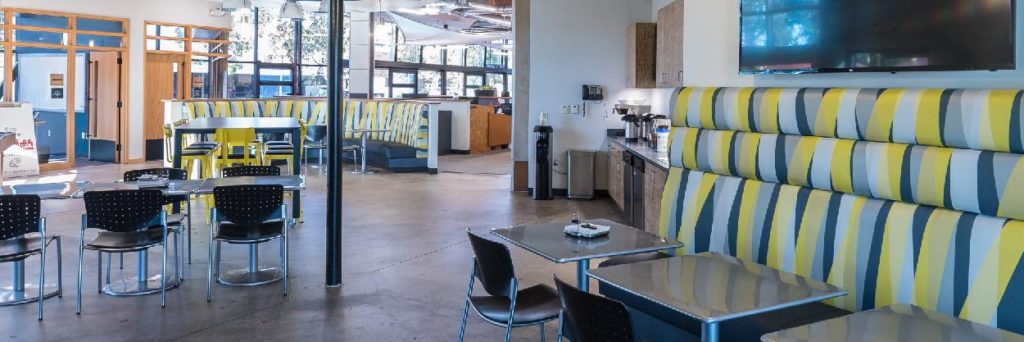This blog was originally posted by ACEEE on February 1, 2021.
Written by Kate Doughty.
Zero-net-energy (ZNE) buildings—ultra-efficient buildings that produce as much energy as they use with on-site renewables like solar panels—earned a surprising moment in the spotlight last year. Then-candidate Joe Biden called for “legislation to set a new net-zero emissions standard for all new commercial buildings by 2030,” prompting then-President Trump to respond that it “means no windows” and later say it meant “tiny windows.”
This is no joking matter, because buildings account for 40% of U.S. energy use and about one-third of greenhouse gas emissions in the United States. Moving toward ZNE buildings is vital. So are windows, of course.
If you’re wondering what these buildings could look like, they’re already here—and their numbers (both commercial and residential) are increasing.
We’re excited about these buildings’ impact—or lack thereof—on the climate. But we know a building’s effectiveness is also measured in the shared experience of those working, learning, and living in it. Fortunately, one of the keys to a ZNE building—for both for user experience and energy use reduction—is optimizing natural light.
More daylight means less energy used on lighting. Double- or triple-paned windows and reflective glass can help maintain a comfortable indoor temperature by trapping or reflecting heat. Natural light also has a positive effect on how people experience buildings, with study after study praising its benefits for health, wellness, and resident satisfaction.
But don’t just take our word for it: from office spaces to schools to libraries, here are commercial examples from across the country that prove that ZNE buildings can literally make the future brighter—for both the people working in them and the planet. New Buildings Institute and Team Zero have lists of residential projects, and Zero Energy Project has case studies showing that these apartments and single-family homes are also bright and airy.
American Geophysical Union Building | Washington, DC
When its office building needed a renovation, the American Geophysical Union (AGU) decided to aim for a zero-net-energy building. It executed the first ZNE commercial office renovation in Washington, D.C. AGU said it wanted to demonstrate that “a building located on a tight urban footprint can operate on a zero-net-energy basis, reduce its carbon footprint, and serve as a productive and healthy place to work and meet.”
Planners looked to recycle as much of the previous building as possible, reclaim energy and water with a green wall, and install a solar PV array. One key strategy for AGU’s design was to enhance the use of natural daylight wherever possible and install windows that help keep the building cool by reflecting heat. (Photo credit: Kevin Koski for AGU)
DPR Construction Offices | San Diego, CA | Phoenix, AZ
 “Incorporating natural daylighting into the built environment is vital, but it also requires a fine balancing act,” Ryan Poole, the leader of DPR Construction’s Global Sustainability Group, told ACEEE. “It’s important to focus on how sunlight will hit the building, how the space is laid out on the interior, how efficient you can make the building.”
“Incorporating natural daylighting into the built environment is vital, but it also requires a fine balancing act,” Ryan Poole, the leader of DPR Construction’s Global Sustainability Group, told ACEEE. “It’s important to focus on how sunlight will hit the building, how the space is laid out on the interior, how efficient you can make the building.”
At 34,000 square feet, DPR’s San Diego and Phoenix locations are the first zero-net-energy offices of their size in their respective cities. The offices save energy, and the company reports an improved satisfaction rating of employees who work in ZNE offices. DPR is now retrofitting its Washington, D.C., office to join the ranks. (Photo credit: Dave Cox)
California Lottery Statewide District Office | Santa Fe Springs, CA
A key part of retrofitting California Lottery’s Santa Fe Springs office to be ZNE was adding natural light wherever possible. During the retrofit, the design team added skylights to enhance daylighting and illuminate workspaces. The building now includes 22 prismatic lens skylights and is lit primarily by natural light. Interior glass walls, known as relights, distribute this light throughout the workspace.
Currently, the California State Lottery is working with LPAS Architecture + Design on achieving ZNE at eight additional offices, by both retrofitting existing facilities and constructing new buildings. (Photo credit: LPAS Architecture + Design)
To learn more about zero-net-energy buildings—and to view more case studies—please visit newbuildings.org.
